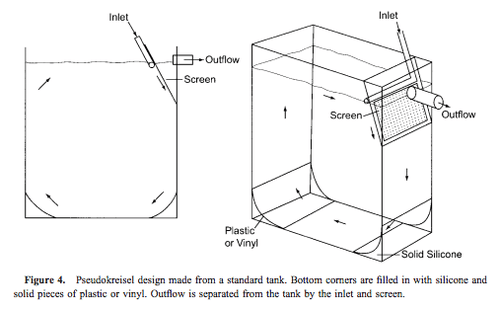
When Alex Andon got his first order for a $25,000 jellyfish tank installation, he was excited. He also had a problem. He didn’t know anything about jellyfish or how to make a jellyfish tank. He had a hunch that people wanted to keep jellyfish as pets, so he created a test website and bought $100 in Google search ads. Lo and behold, his phone started ringing with enquires and he got his first order for the $25,000 jellyfish tank.
Today, Alex’s company Jellyfish Art is the leading company in the jellyfish pet space. In fact, they’re pretty much the only company in the space. When they launched over four years ago, the only way to keep jellyfish at home was to pay a custom installer $10,000-$25,000. After starting as a custom installer, Alex later developed a desktop jellyfish tank that brought the price of jellyfish ownership down to $500.
Along the way, he launched one of the first popular Kickstarter campaigns, received funding from Y Combinator, and created a market that didn’t exist before.
This is the story of Alex Andon and Jellyfish Art – the world’s only jellyfish startup.

Who Wants a Pet Jellyfish?
While the market for pet fish is estimated to be around $2 BN a year, the market for jellyfish is tiny. Part of the reason is that if you put a jellyfish in a regular fish tank, it will instantly be sucked into the filter and die. The other reason, according to Alex, is that until the 1990s there were no jellyfish exhibits at aquariums. In 1992, the Monterey Bay Aquarium took a chance on one, and launched the first major jellyfish exhibit in the United States. It was a smash hit.
The key to housing jellyfish without killing them was developed in 1960s by German oceanographer Wolfe Greve to house plankton. If a jellyfish tank’s water intake and outtake rate are not perfectly in sync, BOOM, you get liquified jellyfish. Dr. Greve had previously designed a tank that he called the “Kreisel” tank that could solve this problem with a perfectly balanced filtration system (kreisel is german for carousel).
Kreisel tanks look like the fat cross section of a cylinder. A slow circular water flow along the edge of the tank keeps the jellyfish suspended in the middle and away from the filter. All water flowing into the tank is sprayed in a flat laminar sheet in front of the exit screen. If jellyfish get close to the exit screen, the incoming water blows them away to safety. The water flowing out of the tank goes through a screen with sufficiently large surface area to prevent any points of suction that could suck a jellyfish in. Only small particles pass through the exit screen, filtering the tank while the jellyfish remain safe in the center.
Most jellyfish look nondescript. They’re practically transparent until you shine LED lights on them or provide a background color.
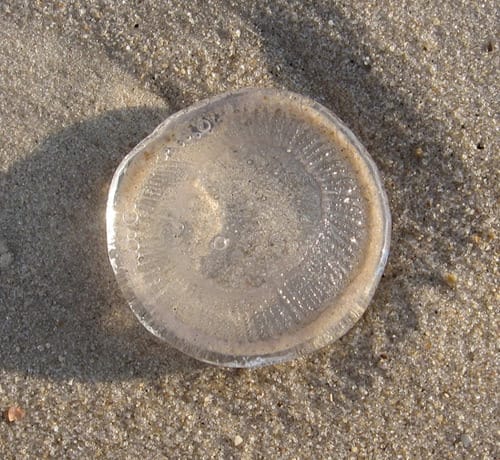
But if you create the right setting, jellyfish are stunning.
Proof of Concept
In late 2007, Alex was itching to start a company, any kind of company at all. He was two years out of college and living with tech entrepreneurs in a house in San Francisco. He worked as a lab technician at a struggling biotech firm.
A marine biology major in college, Alex noticed that jellyfish exhibits completely mesmerized aquarium visitors: “People seemed to have an obsessive infatuation with the jellies. Some people would sit in front of the tanks for hours staring at them.” Since the jellyfish exhibits were so popular, he decided to explore whether there was a market for pet jellyfish.
He discovered that it was possible to keep jellyfish as pets, and possible to catch them as well. Based on studying the design of jellyfish tanks at aquariums and conversations with breeders, he concluded that it was technically feasible to sell jellyfish to consumers.
But was there any actual demand?
To find out, Alex put up a landing page advertising the services of his (at this point non-existent) custom jellyfish tank installation business. Here is the website, courtesy of archive.org (the images on the site didn’t get presevered unfortunately):
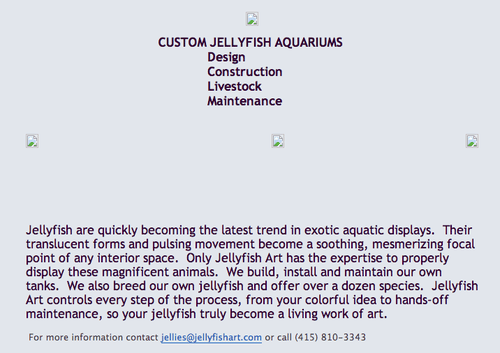
Alex then started a Google Adwords advertising campaign, targeting search terms like “jellyfish tank.” His phone started ringing with potential customers. Before he had spent $100 on Adwords, he made his first sale, a $25,000 custom jellyfish tank for a restaurant opening in Seattle.
The First Sale
Alex made the sale, but now he had a problem: he had to deliver on the tank he promised. Alex had a general understanding of jellyfish tank construction based on googling around and talking to experts, but he didn’t have enough expertise to deliver the product.
Daniel Pon, a home aquarium and maintenance expert (who now works at Jellyfish Art in addition to running his own aquarium business) remembers first meeting Alex around this time:
“I had lunch with him and afterwards was like ‘this guy is in way over his head.’ He doesn’t know how basic things about a fish tank work and he’s going to make a $25 thousand jellyfish tank?”
The experience of selling his first jellyfish tank was, as Alex put it, “a complete disaster.” Eventually Alex found a local aquarium builder to build the tank on his behalf. He got a fishing permit and caught some jellyfish in a bay near San Francisco. He then had to get the tank and jellyfish up to Seattle for installation while the restaurant was still under construction:
“A little before Christmas, a friend and I drove the tank up to Seattle. It was bad. It was filled with water and jellyfish so the truck weight was 3 times its legal payload.”
“It started snowing really hard on the way up. We had to get chain control and put chains on our tires. I’d never done that before. We went through 3 sets of chains.”

When he arrived in Seattle, the jellyfish were dead. That wasn’t such a big deal because they could be replaced. The main issue was setting up the jellyfish tank. Alex worked for five days straight with the construction company to get it installed properly. He slept at the construction site every night.
Alex got the tank installed in time for the restaurant’s opening. But the tank had a few hiccups. One day, a pipe broke and dumped 100 gallons of water into the restaurant. Other minor problems arose too, though according to Alex, the restaurant was annoyed, but pretty cool about it. They still use the tank today, but now for fish.
Alex Andon, Jellyfish Consultant
And so with one customer under his belt, Alex decided to go into the jellyfish business. His website and advertising campaign kept producing customer leads for people that wanted custom jellyfish tanks installed. At the same time, the biotech company Alex worked for was struggling during the recession and looking for volunteers to leave the company in exchange for severance. Alex left biotech and committed to jellyfish.
He found working in the the custom jellyfish tank installation business brutally difficult, but he earned an understanding of tank design, and the aquarium and pet supply industry.
Alex realized that he needed to build an affordable jellyfish tank. Over the course of a year, he finished only 3 custom installations. The market for $25,000 tanks was very small and too labor-intensive to scale. Instead of selling his installation services, he needed to sell a product.
Around February 2009, Alex put up a landing page on his website offering a desktop jellyfish product for around $500. He put up a photoshopped image of a tank that didn’t quite exist yet. Based on the advice of his software engineer roommates, he posted it to Hacker News.
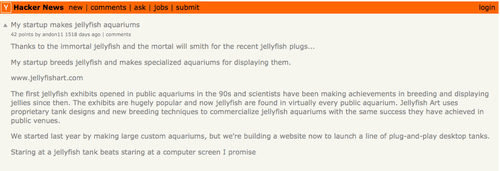
Around this time, he got his big break, even though he wasn’t quite ready for it. The New York Times profiled him in article about people starting businesses after they lost their jobs during the recession. The article led to an influx of traffic to his site, but his affordable desktop jellyfish tank wasn’t ready yet, so it didn’t lead to any new sales. Still, the article put Alex on the map as “the jellyfish entrepreneur.” From March 2009 onwards, almost every article about jellyfish in the popular press mentioned Jellyfish Art.
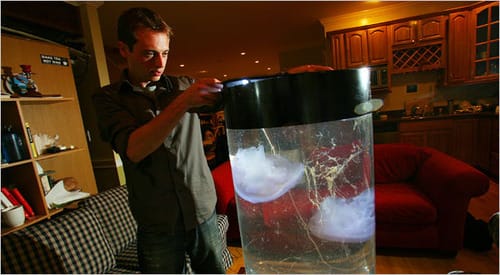
The Desktop Jellyfish Product Version 1.0
A few months after the New York Times article, the first version of the company’s desktop jellyfish product was ready for sale. It was a bit of a Franken-aquarium, hacked together from various off-the-shelf aquarium parts. But it worked. It kept the jellyfish alive, made them look pretty, and cost around $500.
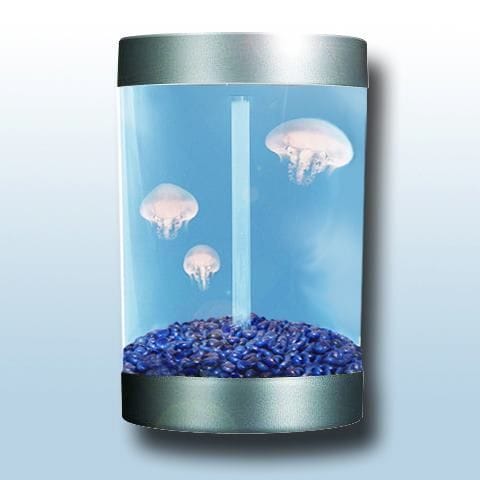
Sales of the desktop jellyfish tank started to take off. The New York Times article ushered in a wave of articles by other publications about Jellyfish Art. Now, when visitors came to the site, they could actually buy the product. It began to look like a real business with a scalable product.
The increase in sales, however, exposed a critical problem in the business that Jellyfish Art struggles with to this day. Alex had succeeded in making an affordable jellyfish tank that people wanted. But where was he going to get a reliable supply of jellyfish to sell?
The Jellyfish Supply Chain
When Alex started Jellyfish Art, he caught the jellyfish himself. He got stung frequently. As an aside, you are NOT supposed to urinate on a jellyfish sting. This appears to be an urban legend derived mostly from an episode of Friends in the 1990s. Just flush it out with vinegar or if that’s not available, salt water. Okay?
But back to the subject at hand. Where did Alex get the jellyfish supply from?
“Basically, I just asked everyone. One local aquarium gave me a list of a few people who might be able to help. One of them was my guy in [place redacted for competitive reasons] and he worked out.”
This supplier, who lived in a tropical island far from San Francisco, put 500-1000 jellyfish in styrofoam coolers and shipped them via commercial carrier to San Francisco. This means they flew in the cargo section of a regular passenger plane. Alex monitored the flight online and picked up the jellyfish at San Francisco Airport, like you might pick up your in-laws.
The jellyfish stock is kept at the company’s warehouse and office in Potrero Hill, San Francisco.
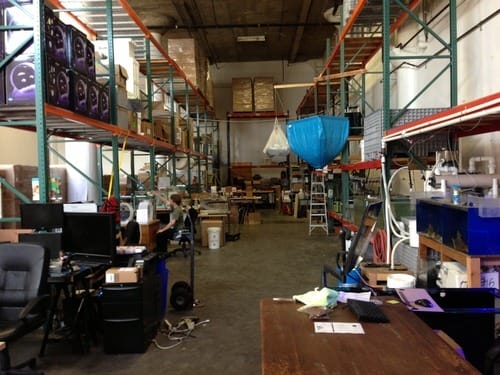
When an order is placed, they ship the jellyfish to the customer by FedEx overnight. Jellyfish can survive 48-72 hours in shipping so even if there is a delay, the jellyfish normally shows up alive. By contrast, fish typically die after twelve hours of transit. The average jellyfish lives for 6 months and Jellyfish Art guarantees that they arrive alive.
The supply chain worked this way for a year. Then one day, the tropical supplier went to his jellyfish catching spot and couldn’t catch a single one. All of them were gone. Every week he checked out the same spot, but every week he went home empty-handed.
But Jellyfish Art survived. Thanks to his increased market exposure, it was easier to get jellyfish. If you breed jellyfish and want to sell them, Alex is the only game in town. He managed to find a decent supplier in Europe that provided just enough supply.
Let’s Make Our Own Product
After a year of rising sales selling another company’s fish tank retrofitted with their own filtration system, Alex decided it was time for Jellyfish Art to develop its own tanks. Buying someone else’s tanks was expensive and manually retrofitting each one was a pain.
At this point, two and a half years after getting started, Alex knew enough to design Jellyfish Art’s signature product – the desktop jellyfish tank. His original “napkin” design is below:

It took another year to get to production. By March of the next year, they had a barely functioning prototype that they unveiled at the Global Pet Expo. The Expo is the largest trade show in the pet industry that is dominated by companies with huge marketing budgets. It normally caters to dog and cat owners. Alex and his team had the smallest booth, but they won best new product of the year in the aquarium category.

And Now, 3 Years After Its Start, Jellyfish Art is an Overnight Success
After winning at the Expo, things start happening pretty fast for Jellyfish Art. They found a Chinese manufacturer for their tanks, but it was still going to be expensive to kick off production so they secured a small business loan. Around the same time, Alex heard about Kickstarter. He figured it could be a good way to get orders and fund the manufacturing.
In August 2011, they launched a Kickstarter campaign aiming to raise $3,000. This was the amount of pre-orders they had gotten so far based on being in the New York Times and winning the Pet Expo. It seemed like an aggressive but doable goal.
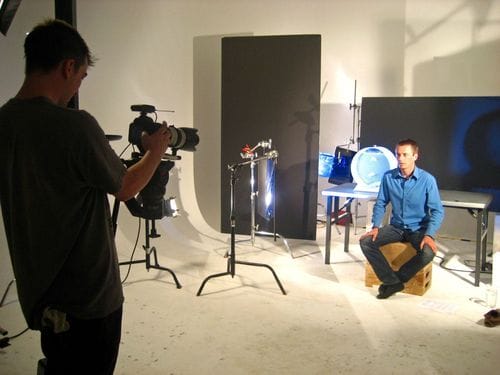
They ended up raising $162,917 on Kickstarter. For the first few days of the campaign, sales trickled in. Then rap artist Jermaine Dupri tweeted out about the campaign and it massively spiked. After that tweet, everything changed in the campaign. More blogs started covering it and Alex went on local TV and radio to talk about the campaign.
Almost immediately after they were “blowing up on Kickstarter,” Alex and Jellyfish Art decided to apply to Y Combinator, the technology startup incubator and investment firm. In their application to Y Combinator, they posited that they could use jellyfish as a beachhead to become the “Amazon for pets.” They were accepted into the Y Combinator Winter 2012 batch.
Mistakes Were Made
After a meteoric rise in the fall of 2011, gravity set in during the winter of 2012. As they started Y Combinator, Alex realized that the “Amazon for pets” idea wasn’t a very good one. Shipping around live animals in boxes like Amazon is a niche industry with low margins. The big money in pets is in dogs and cats.
After toying with the idea of creating a database of dog breeders to connect people with the types of dogs they want, Alex decided against the idea. Their existing business, Jellyfish Art, offered no advantages for starting a dog breeder matching service. Between starting a breeders database from scratch and staying in the world of jellyfish, they chose jellyfish.
During YC, Alex felt pressure to have a jellyfish sales chart that was “up and to the right.” Immediately after they shipped off the jellyfish tanks to their Kickstarter backers, they launched a sale on Fab.com, a flash sale site. The sale on Fab.com was their single largest source of sales ever, but it came at a cost. Jellyfish Art offered the same discount on Fab as they offered their Kickstarter backers. The Kickstarter backers were livid that they received the same treatment even though Kickstarter backers funded the business and put up with a 6 month wait. Some of the people that should have been the biggest supporters of Jellyfish Art turned on the company.
In the wake of massive sales growth from Kickstarter and Fab, Alex started hiring for staff and investing in systems to make the business work. Sales were skyrocketing everyday and it was unclear just how massive this business could become. Alex explains:
“As fast as money was coming in the door, it was flying out. We also had no idea how high the sales would go, whether we should be bracing for more growth or planning for stability.”
“It turned out our product was too expensive for many of the large retail chains that originally showed interest, so sales eventually leveled out.”
As time went on, it became clear that sales wouldn’t continue to rise as quickly as they had in the past few months. What was previously a profitable business was now barely so because they were spending money as if it were a high growth startup. As sales started to flatten out, Alex let go of half his staff.
Despite deciding against the “Amazon for Pets” idea, they received offers from investors to fund the idea after YC Demo Day. Alex decided to turn down the funds. Even if someone was willing to fund it, it was not the business he wanted to start.
The Current Situation
According to Alex, over the last year, sales have been strong but flat. Anyone in the world willing to pay $500 for jellyfish buys the product from Jellyfish Art. The first reason that sales are flat is because they have almost 100% market share. It’s hard to improve on that. No competitors have emerged and if you Google anything jellyfish related, you inevitably end up at the Jellyfish Art website or read an article about the company. Even Wikipedia uses images of their products in its entries. When asked if he was worried about competition, Alex demurred. The Jellyfish Art marketing machine would be hard to unseat.
So, the market of people willing to spend $500 for a jellyfish tank and jellyfish is basically tapped. According to Alex, what Jellyfish Art needs to do is roll out a $100 tank and open up a much larger market and get shelf space in large retailers.
In fact, they’ve already built a low cost jellyfish tank, but they can’t release it. If their demand increased 5-10 times by offering their cheaper tank, they couldn’t source enough jellyfish. They currently sell just about every jellyfish they can get their hands on.

Breeding jellyfish in the Jellyfish Art office.
The whole fate of the business hangs on whether they can breed their own jellyfish. They’re sort of getting the hang of it, but right now they breed 10% of their supply and buy the other 90%. Once they reliably nail the process of producing jellyfish, then they can lower their prices grow again.
Conclusion
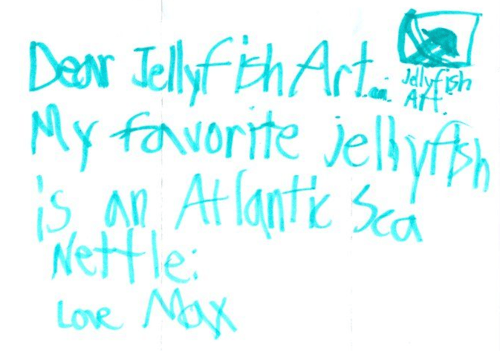
At every stage in Jellyfish Art’s evolution, Alex Andon definitely sold well ahead of his capabilities. Without knowing much about jellyfish, he sold a $25,000 tank. Before he could build his own tank, he jerry-rigged another company’s tank to hold jellyfish. Once he had a barely functioning prototype, he entered it in a trade show and won first prize. Alex was a “fake it till you make it” entrepreneur par excellence.
But then, he made it. The home jellyfish market is small, but Jellyfish Art both created it and dominates it. With the business stable, Alex has had time to experiment with living in a van in San Francisco (he doesn’t recommend it), building a website for artisans to sell their crafts, and figuring out what he wants to do with his life.
Living in San Francisco with a bunch of tech entrepreneurs has heavily influenced Alex. He will tell you that what he really wants to do now is start a successful tech company. Alex thought he could turn Jellyfish Art into a tech business, but he couldn’t. It’s a jellyfish business. But that’s still pretty awesome.
This post was written by Rohin Dhar. Follow him on Twitter here or Google.




